

Rebel Yell Amani Stark

A LETTER FROM THE ARTIST
When I was 16 years old, struggling to get a grasp on identity and autonomy. Then and now, music was an integral part of my life. It started with late-’90s and early-’00s pop, top-40 hip-hop, then emo and pop punk. I was around 16 or 17 when I finally started listening to “good” music. What made it “good”? It wasn’t mainstream, it didn’t sound like anything else I’d heard before, and it made me feel like an individual. It was Santigold’s self-titled album. It was J*Davey’s Beauty in Distortion, the inspiration for my second tattoo. It was The Bake Sale by The Cool Kids. Yet another integral part of my formative years was my deep affection for alt-media. I religiously read Philly Weekly, City Paper, Nylon, Missbehave, and 215 Magazine. I pored over images of nightlife, street fashion, and East Coast It girls. Everything I witnessed in those glossy pages was just a hair out of reach—I was too young, too poor, too sheltered, a little too off-kilter to really experience the early years of the indie sleaze era like I wanted to. Thankfully, my affinity for thrifting, layering, and eclectic accessories lent itself to the themes of the time. Towards the end, I was able to find my little pockets of hipster heaven at spots like Silk City, Kung Fu Necktie, and The Barbary. Once I reached my twenties, Philly nightlife became the thread connecting me to my teenage ideals of adulthood—the early-’00s fun I so longed to be a part of. In hindsight, what made me so eager to experience nightlife in this way was the documentation of the scene. There was Cobra Snake, Bronques, and in Philly, we had Shots Fired. There was MySpace and Facebook. We didn’t have insane cameras attached to our phones to document our looks and the evening’s debauchery; instead, we depended on the likes of the aforementioned to make us look cool and interesting. We prayed they didn’t immortalize our faces in some weird contortion, that we weren’t too sweaty from dancing all night. Being the focal point in front of one of their lenses gave us social collateral that can’t quite be duplicated
in the age of iPhones and Instagram. I didn’t seriously pick up a camera until eight years after the onset of Instagram. Even now, I can’t quite tell you why I decided to start shooting. I can presume I was craving self-expression, acceptance, or a way to temper an innate desire to be creative in a way I felt I had never truly tapped into. Perhaps I wanted to be the arbiter of what was interesting and en vogue. I can definitively say that I wanted to eternalize moments that I, and I alone, deemed fascinating, significant, and commonly overlooked. And for a while, I fed my work into the ravenous monster that is Instagram—my hard work and vision, what felt meaningful, sent off to live in the black hole where all content goes to die. And I don’t fault myself for playing into this then and now. Again, I began my creative practice in the age of Instagram, and for a while, I played by its rules, working to earn its social collateral. But I quickly realized that the perceived value of engaging on that platform, and playing by its rules, influenced my work in a way I didn’t like. I’m still there and will be for a while, but the way me and my work show up there is not for the same reasons it used to be.
I think with all my work, there is going to be some sort of interrogation of the social collateral of the still image.
The FOMO I had thumbing through 215 Magazine and Nylon, anticipating the release of Facebook albums showing photos from the weekend prior, the likes and reshares on Instagram—all of this was the root inspiration for SATIN. Additionally, exploring what it meant to be a Black girl coming of age and defining personal taste in this era. To be weird and find a home here. I started off this project wanting to highlight three common motifs of the Indie Sleaze era: after a night out, a day in the life of an It Girl, and an American Apparel ad. As a Black woman, my subjects were inherently going to be other Black women, so that was a no-brainer. Off rip, SATIN was going to be a project that put the Black women who defined this era on a pedestal. In the early planning stages, I knew I wanted
to incorporate what I formerly (and ignorantly) called a hipster scarf—it was a period-defining piece of clothing that was second only to skinny jeans. But as I worked on this project during the summer of 2024, I knew I couldn’t be cavalier when incorporating the keffiyeh into a scene. Thus, a fourth and final motif was born. The keffiyeh has more commonly come to be known as a symbol of resistance, not just a fashion statement. And let’s be clear, the garment had significance to Arab communities long before it was a mainstay in Williamsburg or NoLibs during the 2000s. But again, here I was in the summer of 2024, with not just social but political collateral being rationed out on social media apps and news outlets while genocides, famines, and uprisings were happening around the globe. Palestine’s genocide was the main focus, while coverage and awareness of crises in Sudan, the Congo, and Haiti paled in comparison. Around that time, Philly was also protesting a proposed arena that would displace countless residents and businesses in Chinatown. At every rally, people of varying ethnicities donned a keffiyeh, advocating and protesting on behalf of a subjugated community. That garment once again represented counteraction to brutality, violence, and marginalization. Satin started off as bullet points in my Notes app but has transformed into a love letter to Black women, an ode to a bygone era and its cultural impact, an interrogation of social currency through photography and social media, and a fist raised to all people fighting for liberation.
Best,
Melissa Alicia Simpson
Back To Black

African American Apparel
But to be clear, Shauna is of Jamaican descent. She’s also a rapper and multi-hyphenate creative with a focus on creative direction, fashion, and acting.
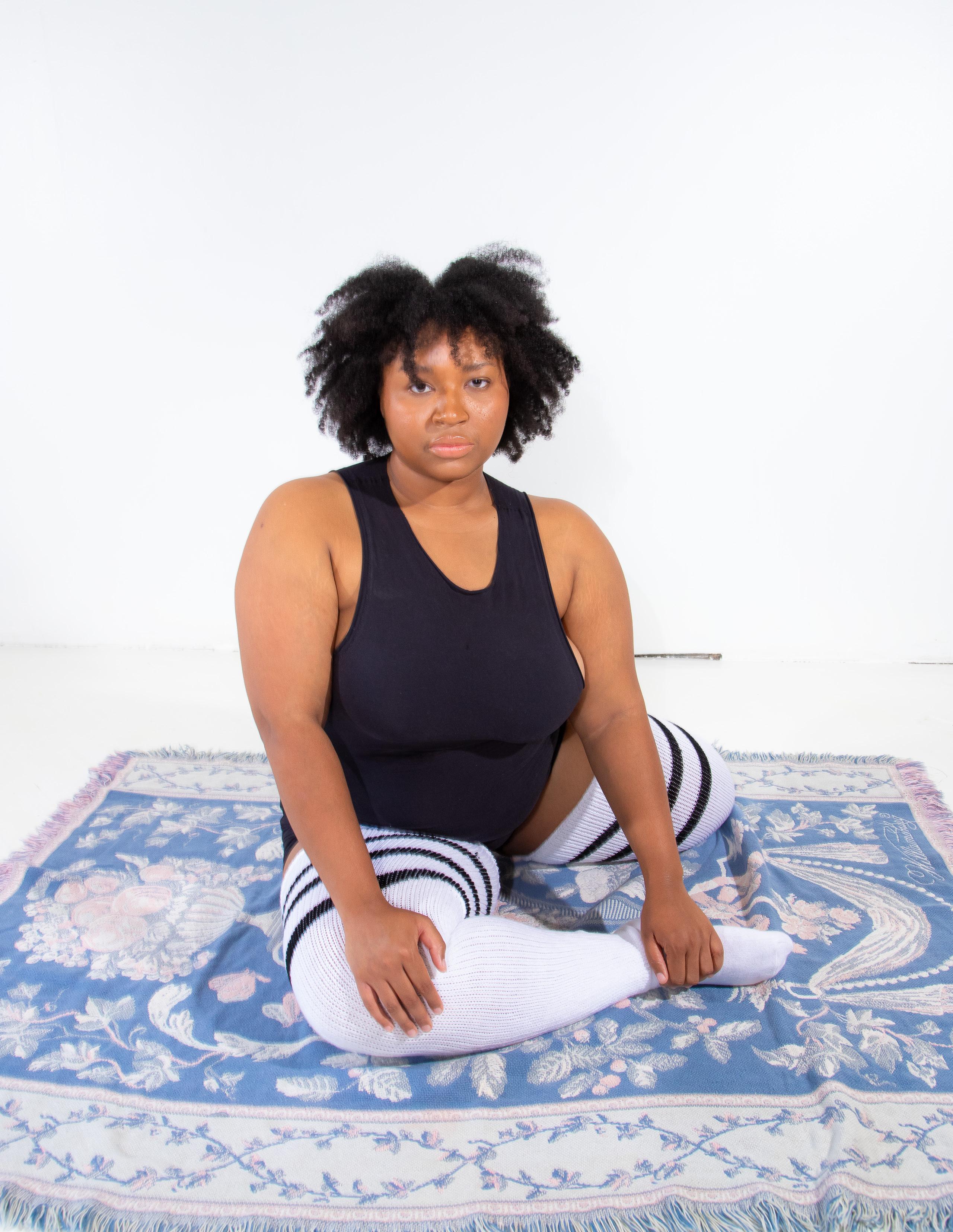

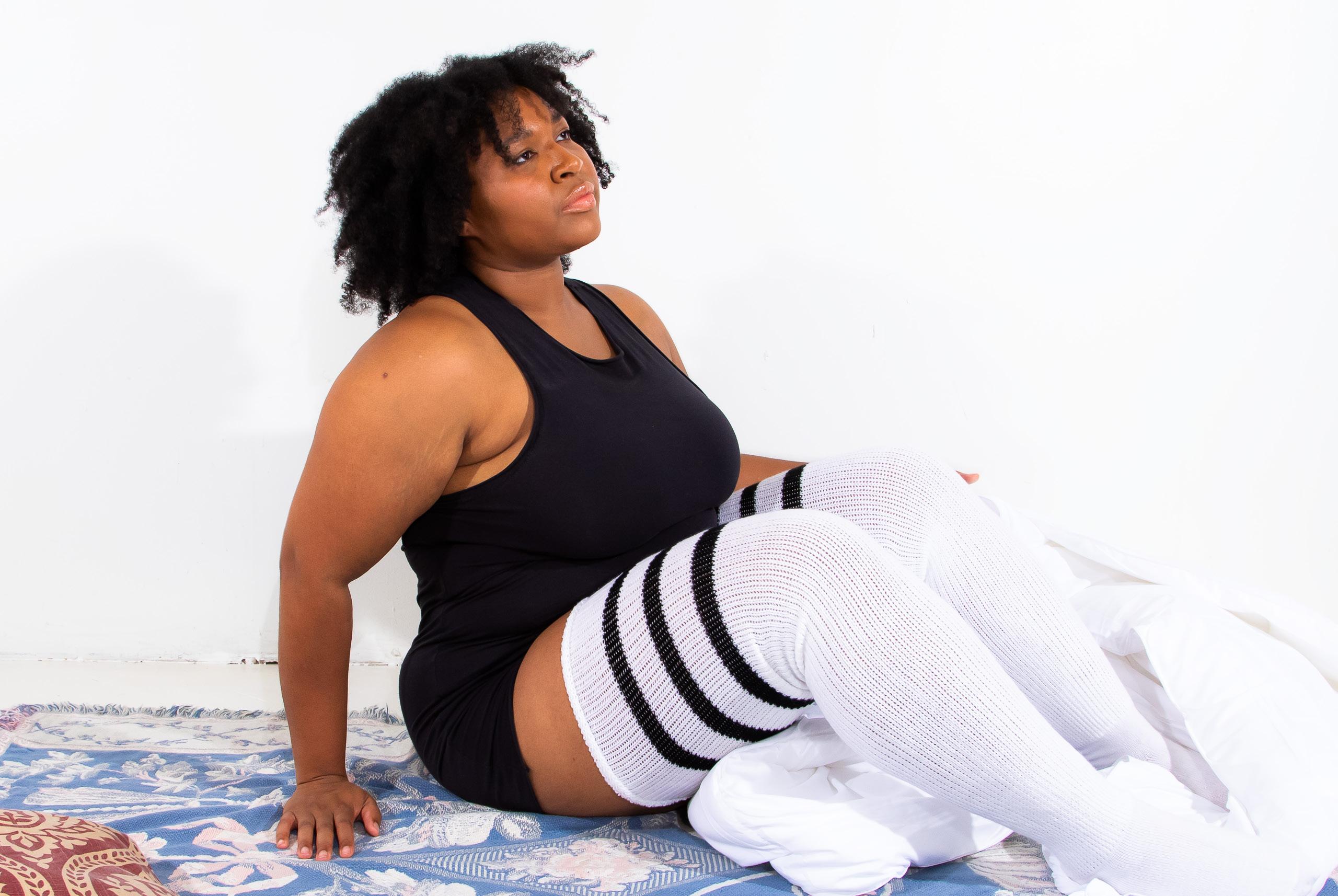
A Party in the Age of the Surveillance State
By John Morrison
In hindsight, the broad societal tension and paranoia around the arrival of the millennium has proved to be chillingly prophetic. Our collective fear of a dystopian future marked by endless wars and administered by a brutal, capitalist technocracy has come to life. But how did we get here and what do we remember about the journey? There is a bitter contradiction having come of age
good times were constantly tempered with unsettling knowledge that as we danced, the world’s most destructive capitalist militaristic machine rolled on—grinding countless lives into dust. For every neon-soaked club night and house party, the empire continued to extend its noxious tentacles into every aspect of our lives, domestically, while raining bombs on our brothers, sisters,

during this time period of great cultural triumph, mass war, and surveillance. Like our forebearers, our youthful experiences are now remembered as halcyon days where music, sex, and joy were plentiful. Packing clubs, bars, and halls around the country, we danced to a dizzying mashup of corporate indie rock, trap, dancehall, Baltimore Club, and guitar-fueled electronica. These
and siblings, internationally. How does a young person cope with this terrifying, disharmonizing reality? How does one reconcile with the irreconcilable? Many of us slipped into a warm embrace of vaipidity, some of us fought back and most of us did a little bit of both. Today’s lie that “America’s War on Terror” went unchallenged by the American people does more to serve the interests of pow-
er than serving the reality on the ground. The decade of America’s “endless war” was met with fierce, organized protest, direct action, and anti-war propaganda. The State responded to the masses’ organizing and outrage with an expansion of its surveillance capabilities. As the decade wore on, a new crop of online communities arose that allowed us to do the state’s surveillance work for them. With the introduction of Myspace in the summer of 2003, Facebook in the winter of 2004, and finally Twitter in the Spring of 2006, our rich social and cultural lives could be curated and shared with people around the world. Grainy, pixelated photos and videos of our parties, DJ sets, and fashion shoots not only documented the exhilarating days of our youth, it also set a bad precedent. Today, each of us walks through the world with an extensive, inescapable digital footprint that can be used against us at any time. Today, the world is still burning, perhaps more than ever. Man-made climate disasters and ongoing, State-sponsored genocides (is there really any other kind of genocide?) are raging across the planet. How do we cope with this terrifying, disharmonizing reality? How does one reconcile with the irreconcilable? In 2025, we are faced with the same questions that we were made to confront in our youth. Perhaps, we were more equipped to answer them now?
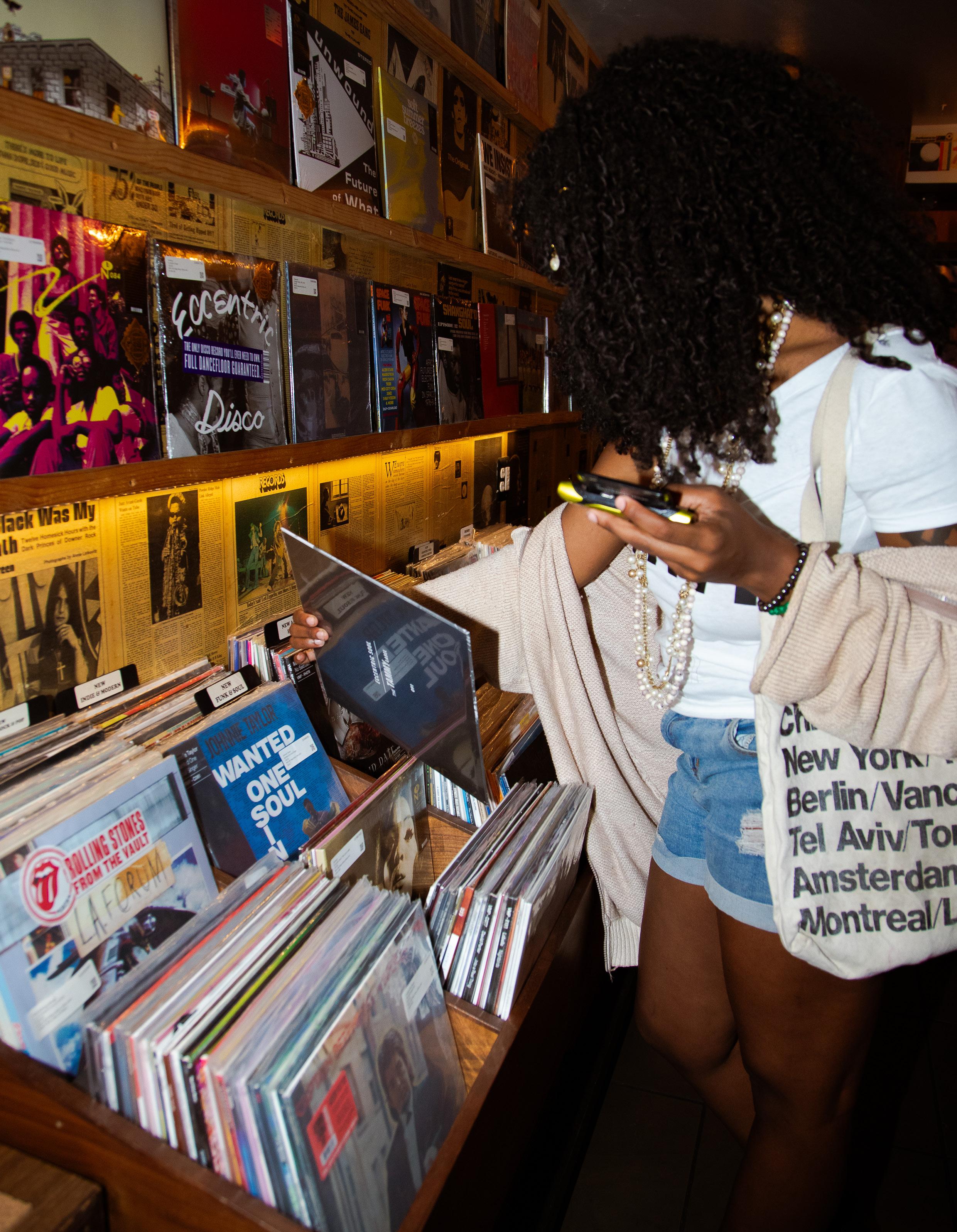
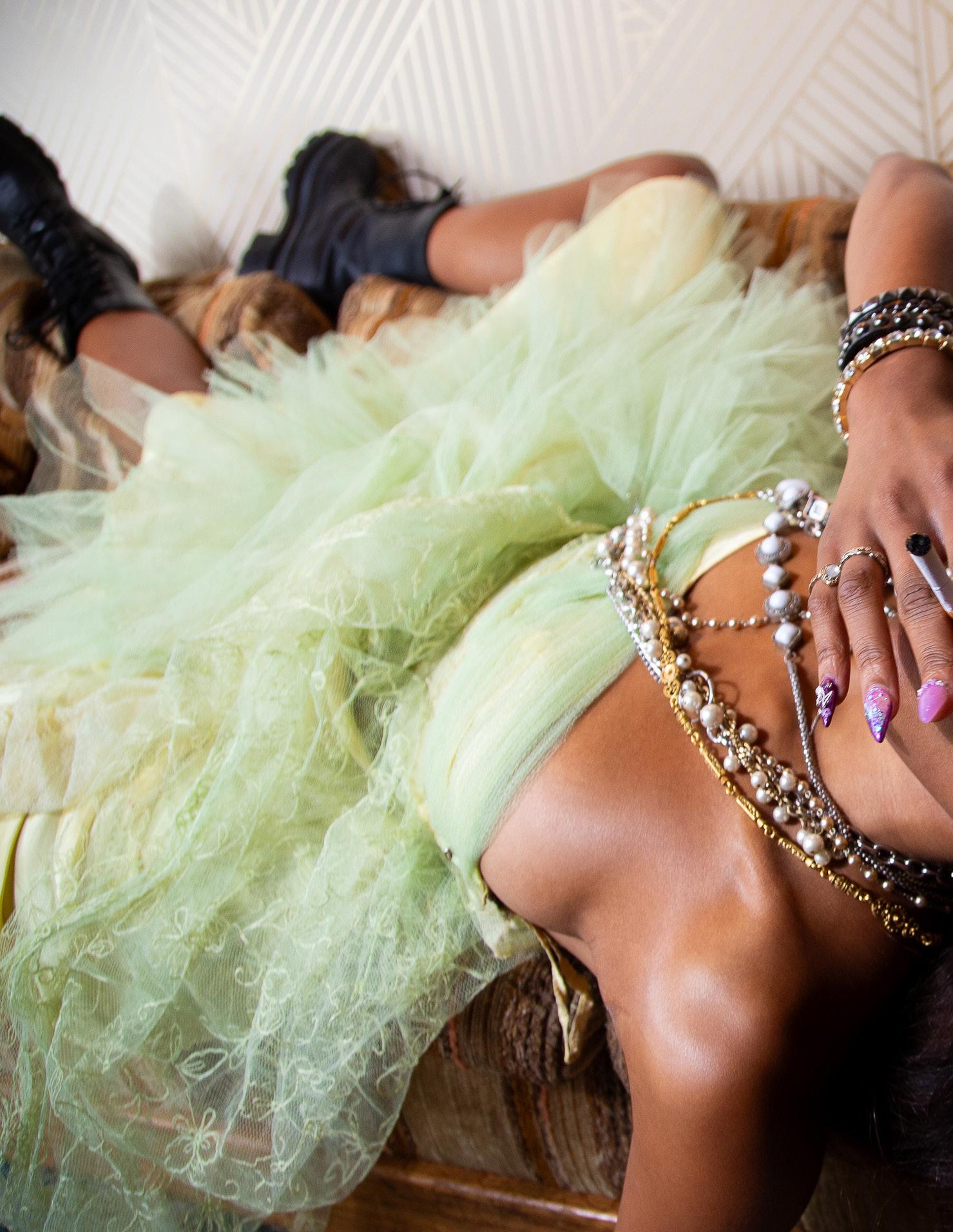



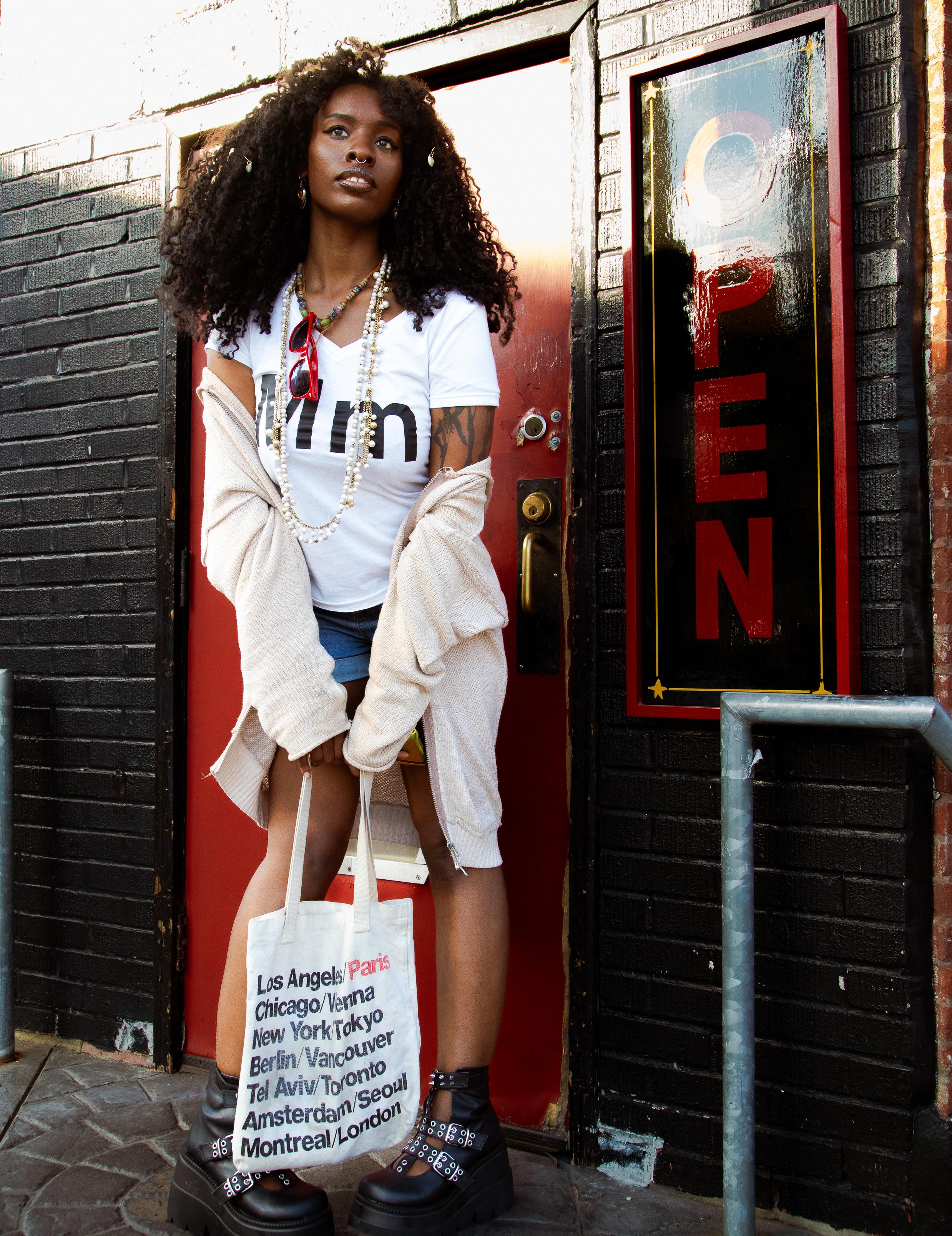

A Mess A ge Fro M
KWith a glass of Cabernet Sauvignon sitting on my desk on a slightly chilly January evening in Philadelphia, my thoughts wander far and wide as I reflect on my experience working with Melissa Simpson as she crafted SATIN. As a photographer, I know what it feels like to obsess over an idea until it’s made real—constantly drawing upon the abstract until every detail is as concrete as the walls we touch and the ground we stand on. SATIN, from my perspective, wasn’t just a labor of love; it became a love letter to one of my preferred bygone eras. But SATIN is more than just
a reminder of a time when fashion and music thrived in a world of fun and experimentation—it shines a light on a demographic often overlooked by popular media, proving once again that representation matters.
Last year, I bought a coffee table book (I own a library’s worth!) by a photographer who gained popularity during the Indie Sleaze era, aka Dawn of the Hipsters. The book contained hundreds of really cool photos from parties across the country, but Black women barely had a presence. I have another photobook from that era, and
if you flip through the pages, you’d rarely find a photo of us in the mix. But we were there. We are always there. Melissa’s visual storytelling in SATIN sent waves of flashbacks to a time before TikTok, when American Apparel clothed America, and a cold PBR or Golden Monkey— served either at The Barbary or in the backroom of the now-nonexistent PYT Burger—set the stage for blessed debauchery.
SATIN has something to say, so take a listen and enjoy.
—Mike Beon aka KURO
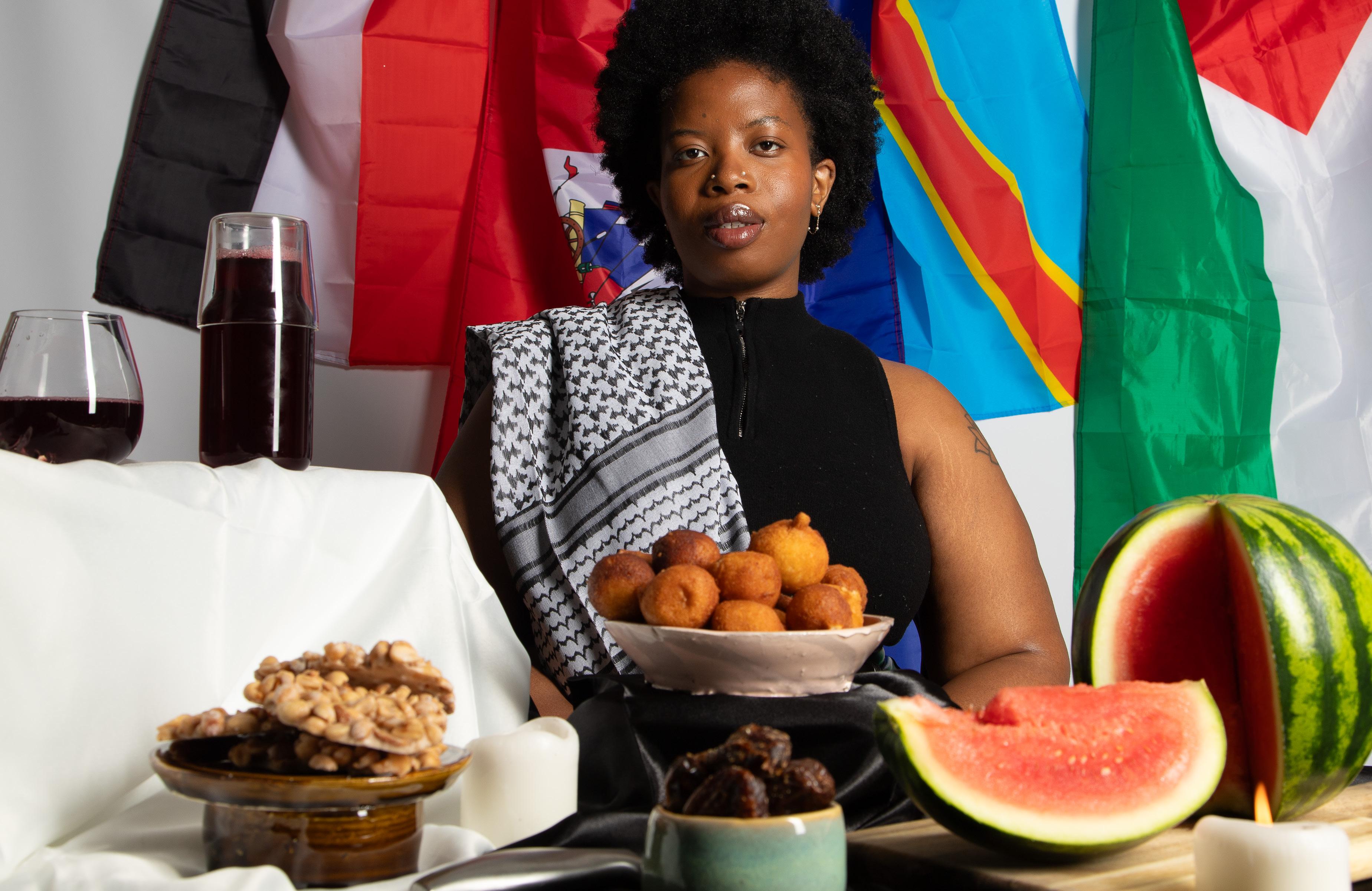

Mikate, the irresistible Congolese beignets, are a beloved treat often enjoyed for breakfast in the Democratic Republic of the Congo and across Africa under various names, like puff-puff or simply beignets. These golden, fluffy dough balls are made from a simple mixture of flour, sugar, yeast, salt, vanilla, and water, then deep-fried to perfection. Best enjoyed warm, they have a light, airy texture with a slightly sweet taste that makes them highly addictive. Preparing mikate is easy—after letting the dough rest, spoonfuls are fried until golden brown, then drained and served fresh. Wheth-
The watermelon has become a powerful symbol of Palestinian resistance and solidarity, rooted in historical censorship of the Palestinian flag. Following the 1967 Arab-Israeli war, displaying the Palestinian flag was outlawed in Israel, prompting artists like Sliman Mansour to find creative ways to express identity and defiance. When Israeli authorities warned that even paintings in the flag’s colors— red, green, black, and white—would be confiscated, artists and activists began using watermelons as a substitute. Over time, the fruit became a widely recognized emblem of Palestinian resilience. Today, as debates over the war in Gaza unfold, the watermelon reemerges in protests, murals, and social media, with some activists using it as a workaround to counter online censorship of pro-Palestinian content.
Dates and date palms hold deep cultural significance in Palestine, symbolizing heritage, resilience, and sustenance. As a staple food, especially during Ramadan, dates represent generosity, gratitude, and good health. Beyond their nutritional value, date palm leaves and fibers are used in traditional crafts, reflecting a connection to Palestinian history and the broader Arab cultural
FLAGS FOOD FABRIC FREEDOM
Tablettes are traditional Haitian sweets made by caramelizing sugar with nuts or fruit to create a crunchy, flavorful candy similar to pralines or brittle. Popular varieties include tablette pistache (peanut brittle), tablette nwa (cashew brittle), tablette kokoye (coconut brittle), tablette pécan (pecan brittle), and tablette fig (fruit brittle). They are made by melting sugar until golden brown, then mixing in nuts or fruit before letting the mixture
Sudanese hibiscus tea, also known as Karkade, has been enjoyed since ancient Egypt, where it was considered the Drink of the Pharaohs. While widely consumed in Arab countries, it reached Europe and the U.S. in the 18th century. This vibrant red tea is packed with beta-carotene, flavonoids, anthocyanins, B vitamins, and an extra boost of Vitamin C, making it a nutritious choice. It supports the immune system, heart health, metabolism, and nervous system, with cold tea benefiting circulation and metabolism, while hot tea soothes the nerves and strengthens immunity. To prepare, steep one table -
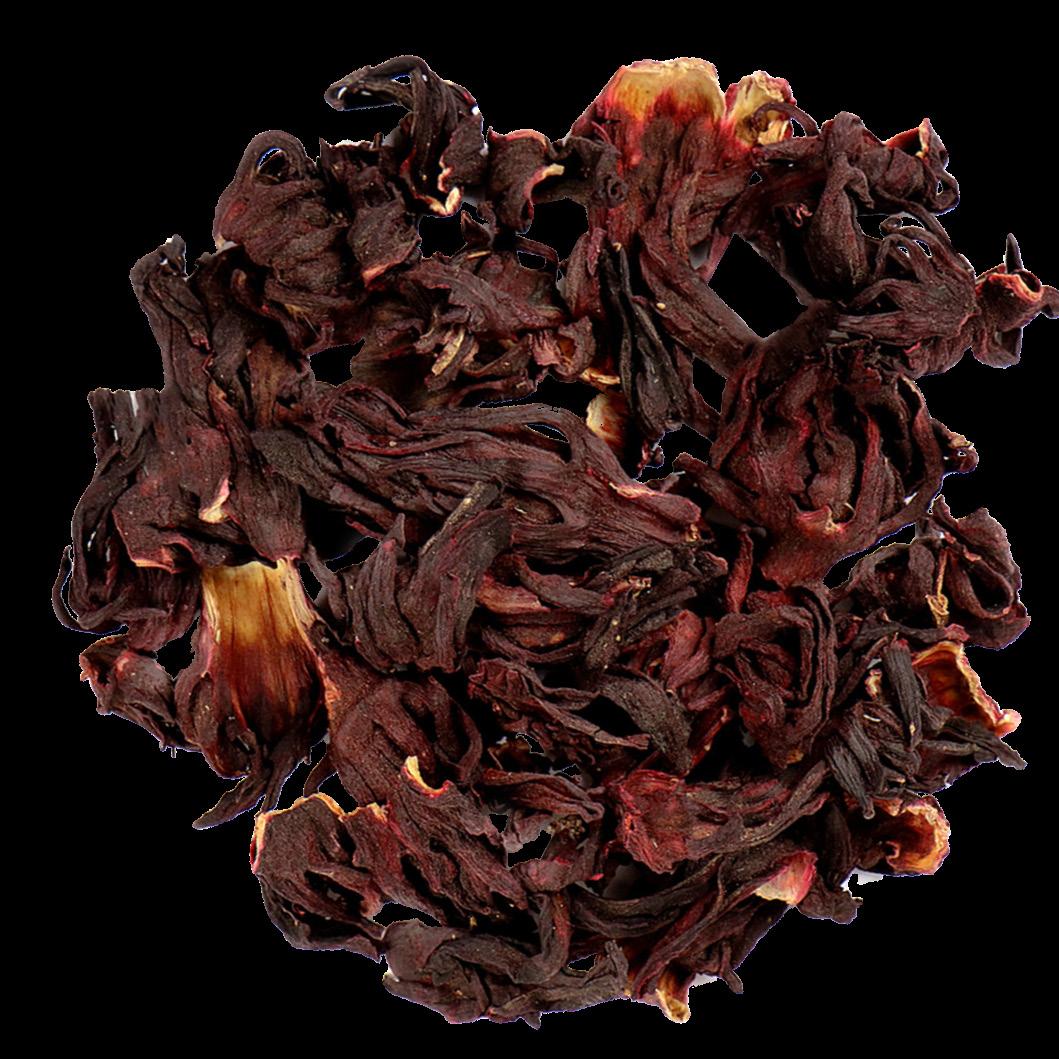

MODELSThe
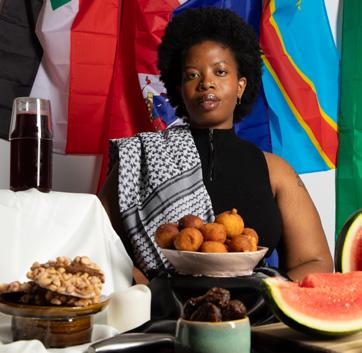
Rachel K. Godfrey (she/they) is “a part-time lover and a full-time friend.”
A narrative alchemist, Rachel weaves songwriting, culture journalism, and public art programming into compelling explorations of art, media, and identity.
Under the stage name Sinoe—inspired by the Liberian county where her mother was raised—Rachel’s art delves into relationships, spirituality, and the power of intentional legacy building. Her songwriting examines the weight of inheritance and generational trauma, encouraging listeners to reimagine the past as a foundation for meaningful, lasting change. Viewing artmaking as both an anticapitalist and spiritually centering practice, Rachel sees creativity as a pathway to connection, curiosity, and collective care.
Beyond her own musical journey, Rachel is a passionate lover of music and its stories. She is the creator, producer, and host of City Rhythms, a musician spotlight series celebrating Philadelphia-area artists and the narratives behind their work. Airing every Tuesday at 10 PM on Xfinity 66/966 and Fios 29/30, the series offers an intimate glimpse into the city’s dynamic music scene. Additionally, Rachel serves as the Director of Programs at Rock to the Future, overseeing music education initiatives that impact more than 1,100 children and teens annually. Through all her work, Rachel is dedicated to amplifying voices, fostering connection, and celebrating the transformative power of the arts.



Amani Starks is a 22 year old Philadelphia native who is an artist, designer, model & singer who has never stopped creating. Amani has been drawing ever since she could hold a pencil, and carries her passion for creativity in all of her endeavors. Thinking with her heart, she creates projects by blending her background in painting and cartooning with her restless inner child that her fans can cherish for years to come. Eager to share her work with the world, since 2018 she’s sold hundreds of self produced art prints, comic books, music CDs, & hand printed apparel in Major US Cities such as Atlanta, LA, NYC, Philadelphia & more. Starks also creatively directs and produces all her own music ventures from music videos to album covers that have amassed thousands of plays. In her work her message is clear- express yourself!
Born in Trenton, New Jersey, to Jamaican immigrants, Shauna Moon considers herself to be an experimental hip-hop artist. Inspired by Missy Elliott, Nicki Minaj, and Sean Paul, Shauna’s music represents the diversity of the global hip-hop scene. Her lyrics are drawn from pop culture, as she references TV characters, anime, and current news in a storytelling format. Shauna’s other interests include creative direction, fashion, and acting.
Makiah Stephens is a Philadelphia-based artist and model whose work highlights identity, culture, and the beauty of the natural world. As the founder of TNK Arts, she blends creativity and authenticity in her approach to visual storytelling. A graduate of Saint Joseph’s University with a degree in communications and media studies, Makiah centers her artistry on fostering connection and celebrating diverse perspectives.
Through collaborations with organizations like UNCF’s Target Scholars and public health campaigns in Philadelphia, Makiah has established herself as a dynamic creative force. Whether modeling or crafting bold concepts, her work is rooted in a passion for storytelling and artistic activism. Learn more or book her at imtnkarts.com.

THANK YOU
Tiger Strikes Asteroid
Mike “Kuro” Beon
John Morrison
Rachel K. Godfrey
Shauna Moon
Makiah Stephens
Amani Starks
Shavar Punter
Joshua Kwedar
Studio Impulse
The Reservoir
Fireball Printing
EL Bar
